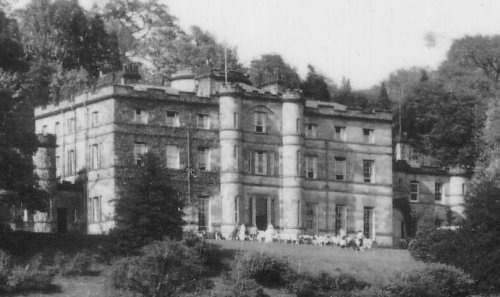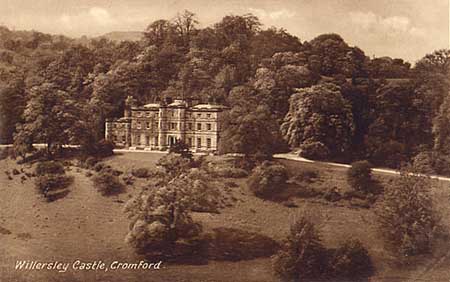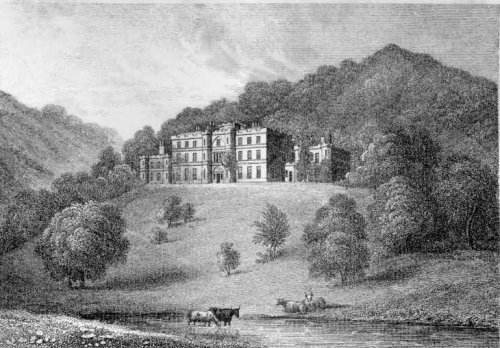
Drawn in 1890 by William DOXEY

Printed 1836
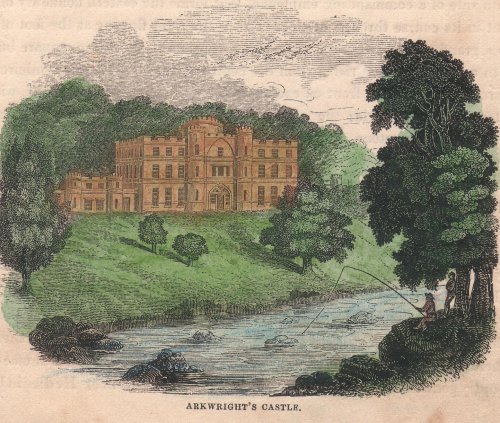
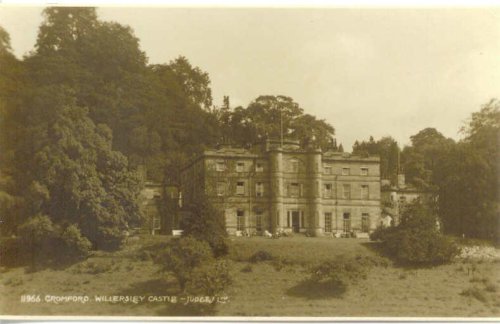
A more recent photo from the air.
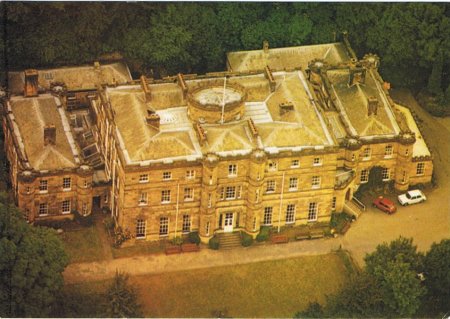
Willersley Castle
WILLERSLEY CASTLE, Cromford, was built in 1789/90 for Sir Richard
ARKWRIGHT, who had purchased the Manor of Willersley in 1782. He was the
cotton manufacturing entrepreneur, who had built his first cotton mills at
Cromford about 1770. His work for the British cotton industry earned him a
personal fortune and a Knighthood in 1786. He employed the Welshman, William
THOMAS, as his Architect, who designed a picturesque house in classical style
to suit the grandeur of its commanding position on the hills overlooking the
River Derwent. While it was still being built, and the ARKWRIGHTs were
living at the Rock House across the river at Cromford, the new house was
completely gutted by fire on the night of 8th August 1791, and Sir Richard
died a year later before he had ever lived in it. However, it was rebuilt
(to designs by Thomas GARDNER and the locally-born Edward BLORE) and
enjoyed by his eldest son, another Richard ARKWRIGHT, and then by his
third son Peter and his descendants. However, Peter ARKWRIGHT's
great-grandson did not wish to live there, and it was sold in 1936 to the
Wesley Guild, who in 1991, still continued to run it as a conference and
holiday centre.
--- [Ref: "The Derbyshire Country House", Maxwell Craven &
Michael Stanley, Breedon Books, 1991, pp.223-5] sent by Sonia Addis-Smith,
Bedford
The sketch was drawn by William DOXEY in 1890, GGFather of the author
Willersley Castle, the noble home raised with his well-earned wealth,
stands on the south side of a commanding eminence, that forms the
eastern boundary of the Derwent in its course through Matlock Dale:
the river flowing at the foot of the hill, in a grand sweep eastward.
The castle consists of an oblong, square building, with a circular
tower rising from the centre of the roof, and a semicircular
tower projecting from the front on each side of the entrance; and two
wings, with a round tower at each angle: the whole structure is
embattled, and the exterior walls are of white freestone.
[Engraving removed from an early 1800s leatherbound book, the reverse
containing this text, see below]
Helen Rogers writes:
I have just found your web pages about Willersley and wanted to correct you
on the date the Wesley Guild purchased the Castle. It was bought in 1928
and opened for business on 28th May 1929. The company now trades under the
name Christian Guild Holidays and celebrated 75 years as a Guild Hotel and
Conference Centre.
I hope that this is useful to you
Helen Rogers
Willersley Castle
Dates:
Photo taken:1929
Size:
Source:Sonia Addis-Smith
Click on photo for enlargement (on CD only)
Have any more information about this photo? Please e-mail
the author on: 
